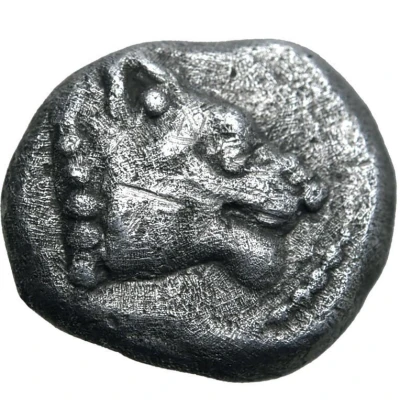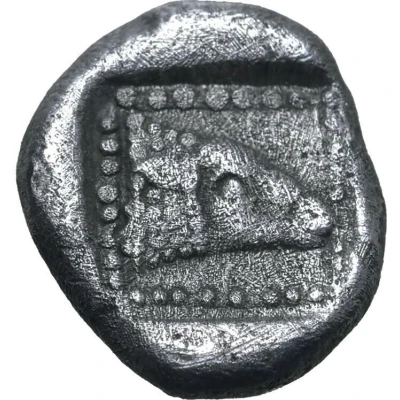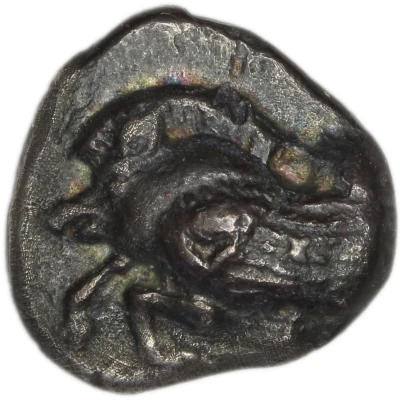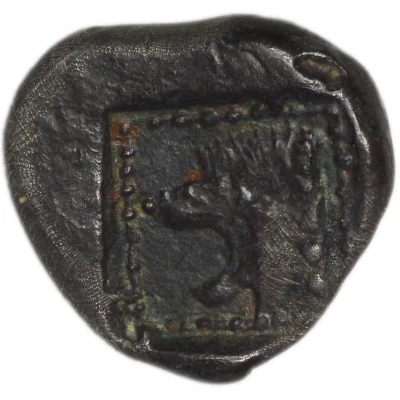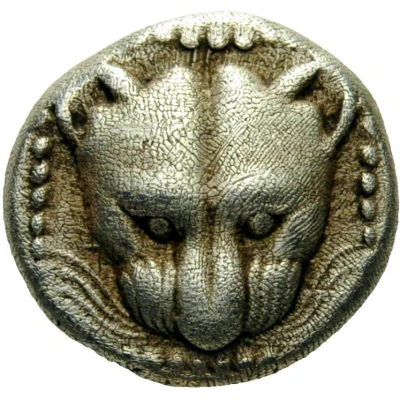
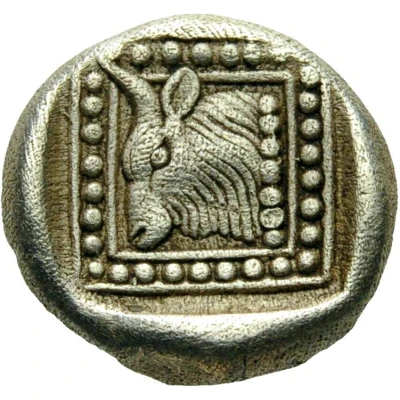

© Nomos AG
Triobol 512 BC
512 BC year| Silver | 1.61 g | 10.0 mm |
| Issuer | Samos (Ionia) |
|---|---|
| Type | Standard circulation coin |
| Year | 512 BC |
| Value | 3 Obols (½) |
| Currency | Drachm |
| Composition | Silver |
| Weight | 1.61 g |
| Diameter | 10.0 mm |
| Shape | Round (irregular) |
| Technique | Hammered, Incuse |
| Orientation | Variable alignment ↺ |
| Demonetized | Yes |
| Updated | 2024-10-10 |
| Numista | N#186879 |
|---|---|
| Rarity index | 100% |
Reverse
Head of an ox to left, within a square border pellets enclosing a border of pellets. All within an incuse square.
Interesting fact
The Triobol coin was used as a form of currency in ancient Greece, specifically in the city-state of Samos (Ionia) in the 6th century BC. It was made of silver and weighed around 1.61 grams, which was a significant amount for a coin at that time. Despite its small size, the Triobol was widely accepted as a form of payment and was used to purchase goods and services. It's fascinating to think that this tiny coin played a big role in the economy of ancient Greece!
